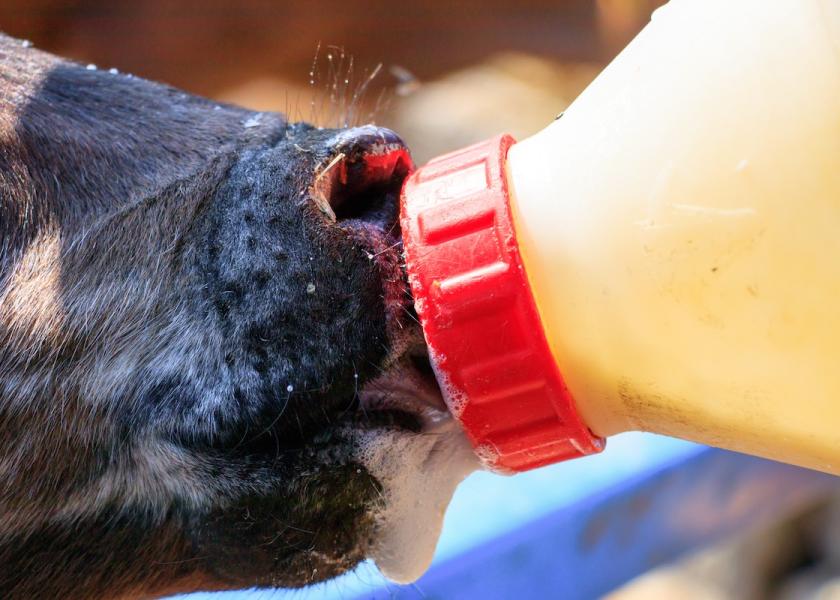What’s the Best Route to Mimicking Transition Milk?

As calf-raisers look to improve health and performance, while also managing disease with less antibiotic use, feeding transition milk has been proven in multiple studies to be a winning strategy.
But achieving the effect of transition milk – the milk harvested in the next several milkings after the initial colostrum – can be strategically challenging on-farm. So, what’s the best way to duplicate the beneficial effects of transition milk in a more practical execution protocol? A team at the University of Guelph, Ontario, Canada, led by renowned calf researcher Michael Steele, recently evaluated some strategies to find out.
Their study, published recently in the Journal of Dairy Science, divided 200 newborn Holstein heifer calves into 4 groups of 50 each. All calves received 3.2 L of reconstituted, bovine-derived colostrum replacer containing 27% IgG at 0 and 12 hours after birth. After that, they received:
- Group 1 – 100% milk replacer only from days 2-14, which was the control group.
- Group 2 – 50% colostrum replacer and 50% milk replacer from days 2-3; then 100% milk replacer from days 4-14.
- Group 3 – 10% colostrum replacer and 90% milk replacer from days 2-14.
- Group 4 – A combination of (2) and (3): 50/50% colostrum replacer:milk replacer from days 2-3, then a 10/90% ratio over days 4-14.
All feedings up to day 14 totaled 3 L each and were fed twice per day. From days 15-41, all 4 groups were fed the same diet of 4L of milk replacer twice a day. At the end of the study on Day 49 of life, the results showed:
- Compared to Group 1 (control), average daily gain (ADG) was significantly better in Groups 3 and 4 from 7-14 days; and better in Group 2 from 14-21 days.
- There was no association between treatment and the odds or duration of diarrhea cases for any treatment.
- Incidence of diarrhea was, however, delayed in Groups 2 and 3.
- Groups 2 and 3 also had a lower hazard for mortality than the control group.
- There was no observable effect of treatment on duration of bovine respiratory disease (BRD) or age at BRD onset.
The authors noted that most studies on mimicking transition milk have not followed calves beyond the first few days of life. Their study provided a longer-term look at the impacts of this nutritional change.
The study also showed that more is not necessarily better, in that Group 4 did not have the best results when evaluating the hazard for both diarrhea and mortality.
They also noted that BRD incidence was relatively high in all groups, possibly due to the fact that all calves in the study were born from June through August and were raised in conditions of elevated temperature, humidity, and heat stress. This may have led to some misdiagnoses for BRD, and the authors suggested confirmation of BRD with lung ultrasonography in future studies.
Overall, the study showed that feeding colostrum beyond the first day of life – either in high concentrations for a short period or in low concentrations for an extended period – can positively impact ADG, diarrhea risk, and mortality incidence. The next research challenge is determining exactly why these effects are created, and which supplementation strategy is the most effective.
For more on calf health, read:
- Two Reasons Why Feeding Hay Could Help Alleviate Cross-Sucking
- Can We Improve Colostrum Through Dam Nutrition?
- Nine Ways to Help Resuscitate A Newborn Calf
- Waste Milk: Freebie or Foible?
- Who Should Be Raising Replacement Heifers?







